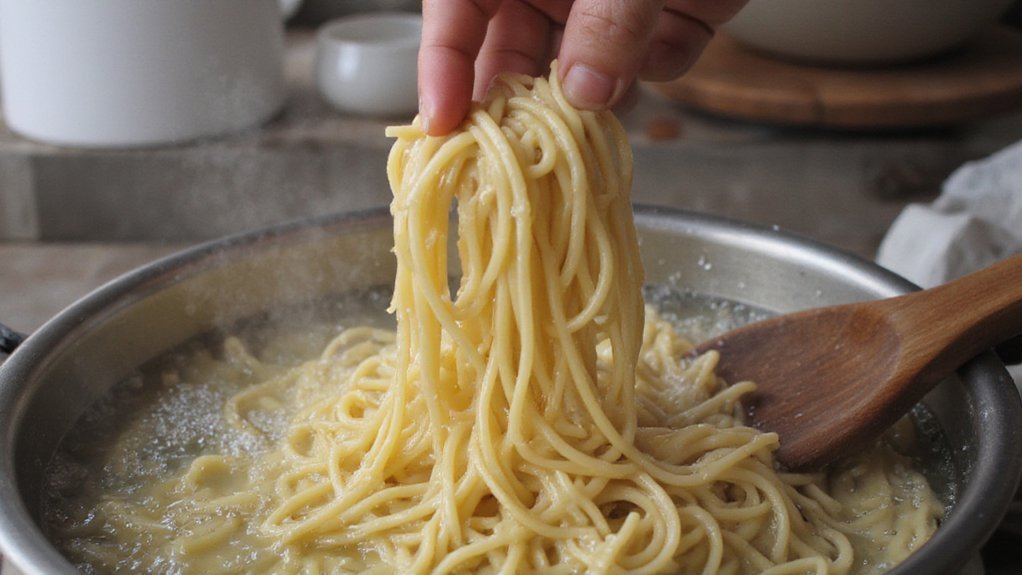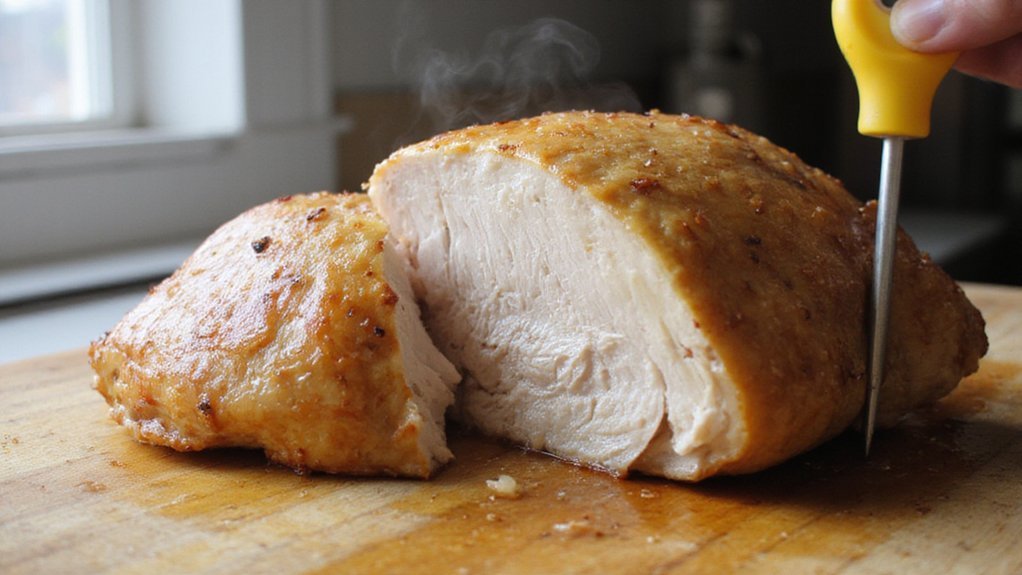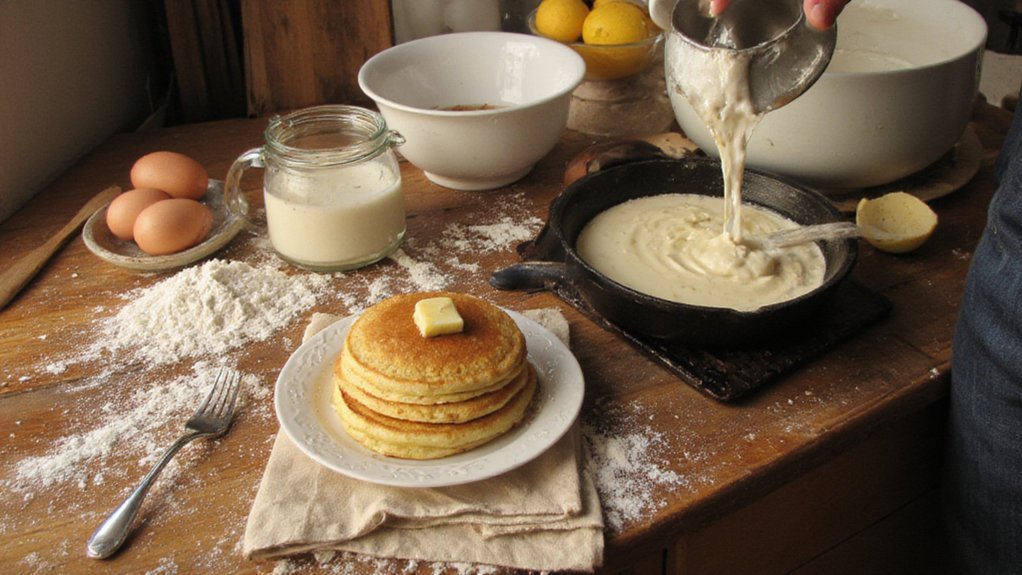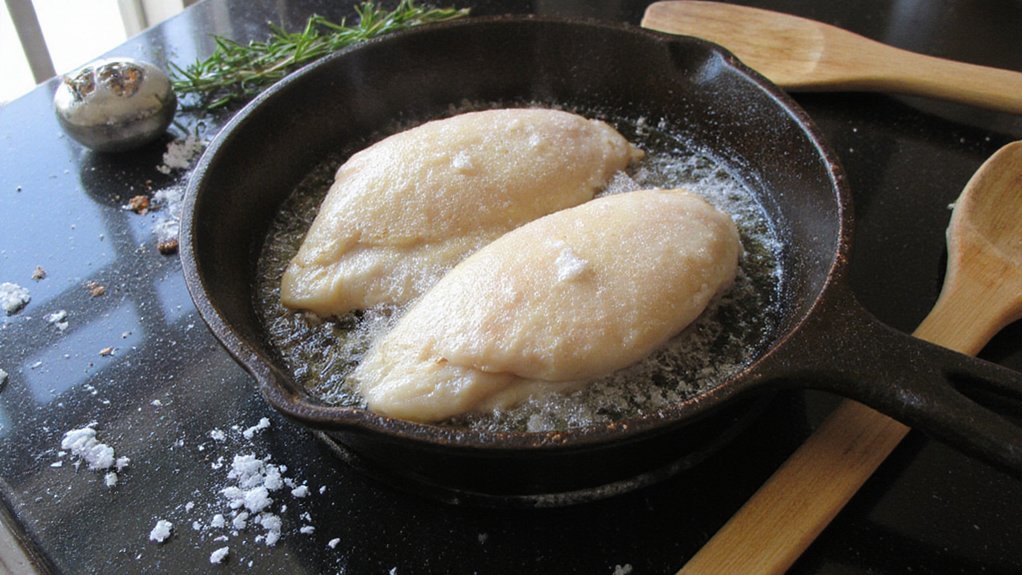You’ll start by choosing the right pasta and timing it to the package. Use a large pot of vigorously boiling, well-salted water so the noodles cook evenly. Taste a minute before the recommended time to check for a firm core. Then finish in the sauce with reserved starchy water to perfect texture—here’s how.
Key Takeaways
- Use plenty of vigorously boiling, salted water (1–1.5% salt; about 1 L per 100 g pasta).
- Start tasting about one minute before the package’s shortest recommended time.
- Bite through the cooled center; al dente has a slight firm core without raw flour taste.
- Drain when al dente, reserving 1/4–1/2 cup starchy cooking water for finishing in sauce.
- Finish cooking pasta in simmering sauce, stirring and adding starchy water to achieve a glossy, clingy coating.
Choose the Right Pasta and Check Package Timing
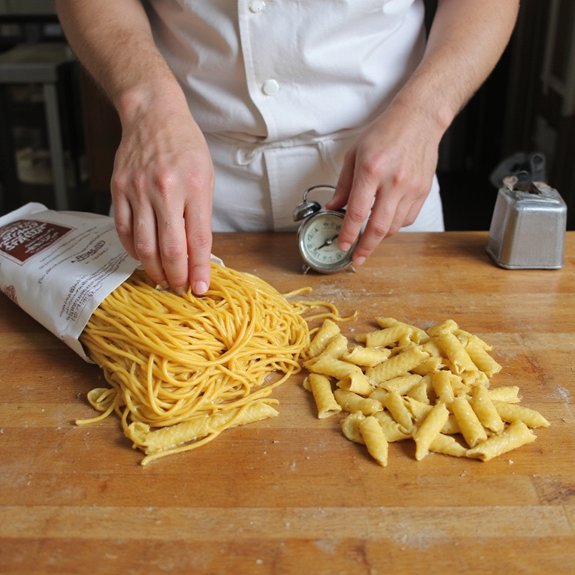
When you select pasta, match shape and thickness to the sauce and cooking time: thicker noodles (fusilli, rigatoni) need more boiling time than thin strands (spaghetti, angel hair), and fresh pasta cooks in a fraction of the time of dried. You’ll choose pasta types deliberately: long, tubular, and shaped profiles change surface area, bite, and starch release. Check package timing as the baseline; manufacturers calibrate to specific extrusion, drying, and semolina characteristics. You should test doneness before the listed end time using a calibrated timer and a quick bite—al dente means a slight white core and resilient chew. For innovation, document how alternate cooking methods—brief steaming, sous-vide precooking, or controlled hydrating—alter required time and texture. Standardize your adjustments in a concise table or chart so you can reproduce target al dente across recipes and scale production without sacrificing precision. Record results and iterate to refine precise timing regularly.
Use Plenty of Rapidly Boiling, Salted Water
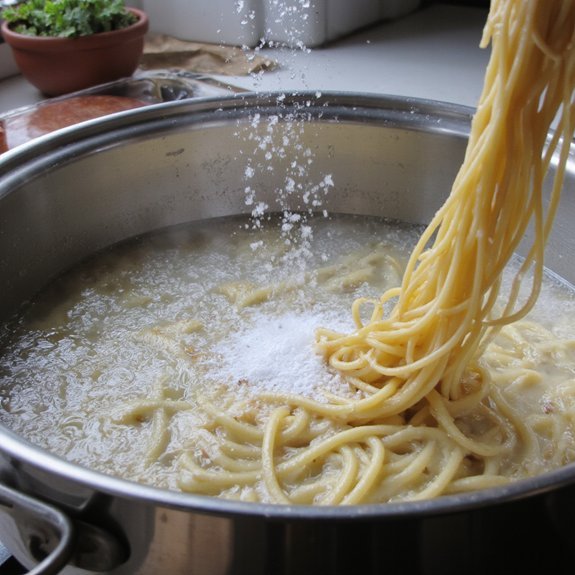
A generous volume of rapidly boiling, salted water is essential for al dente results: aim for roughly 1 L of water per 100 g of dried pasta (about 4–6 L for a 500 g batch) and a salt concentration of 1–1.5% by weight (≈10–15 g per liter). You’ll bring water to a vigorous boil before adding pasta to maintain temperature; overcrowding lowers heat transfer and causes clumping. Use a wide pot to minimize temperature drop. Measure salt proportions by weight; a digital scale sets 1–1.5% precisely. Add salt once boiling so it dissolves quickly and concentration is uniform.
Adopt boiling techniques that sustain a turbulent boil: high steady heat, lid on until first boil, then remove and adjust to preserve vigor without spillage. Stir periodically to prevent adhesion. Generous water volume provides heat capacity and stable ionic environment so pasta hydrates uniformly, gelatinizes and yields al dente texture
Test for Doneness: Taste a Minute Early
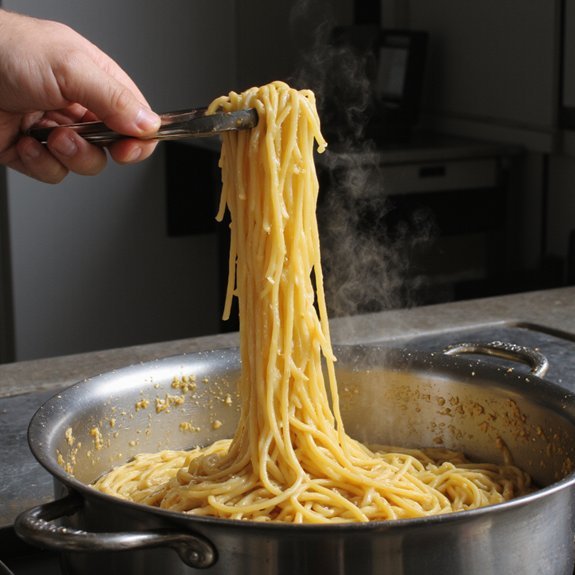
You should begin tasting about one minute before the package’s shortest recommended time so you can intercept the brief window between fully hydrated and al dente. At that point perform a focused taste test: remove a single strand or piece, cool briefly, and bite through the center. You’re looking for a firm core that yields under pressure without a raw flour note. Use your tongue and incisors to judge resistance, then do a quick texture check with your fingertips to assess surface slip. If it’s snaps or feels chalky, cook in precise 15–30 second increments and repeat the test. If it’s slightly tender with a chew, you’ve achieved al dente. Record the exact elapsed time and boil conditions for repetition; innovation depends on reproducibility. Develop a mental database for shapes and brands—thick shapes need longer intercepts. This calibrated tasting protocol minimizes overcooking and gives you consistent, intentional results.
Finish Cooking in the Sauce With Reserved Starchy Water
Having intercepted the pasta a minute short of done, add it directly to a simmering sauce with 1/4–1/2 cup of reserved starchy water at hand and finish cooking there; the goal is to let the pasta absorb flavor while the starch thickens and emulsifies the sauce into a glossy coating. You’ll control residual heat and hydration to drive sauce absorption and timed gelatinization of surface starches. Stir continuously, adding small aliquots of starchy water to calibrate viscosity; stop when pasta reaches desired bite and sauce clings uniformly. Use high-salt liquid and maintain gentle simmer to promote flavor enhancement and prevent dilution. For innovation, experiment with oil-droplet emulsions or reduced broths to alter mouthfeel and adhesion. Monitor with tactile testing, not clock time.
Catch pasta just shy of done, finish in simmering sauce with starchy water to emulsify and cling
- Reserve the starchy water before draining.
- Add water incrementally to reach viscosity.
- Agitate to encourage emulsification and even coating.
- Taste for texture; finish when interior resists but yields.
Toss, Rest Briefly, and Serve Immediately
Pan-toss the pasta with its sauce and any remaining starchy water so each piece is uniformly coated, then let it rest off the heat for 30–60 seconds to let the emulsion stabilize and the surface starches set — you’ll serve immediately while the sauce is glossy and the bite remains al dente. Use a consistent tossing technique: cradle the pan and rotate with short wrist motions rather than stirring, which shears the emulsion and bruises fragile shapes. Assess gloss and cling—if the sauce beads, add a teaspoon of reserved water; if it breaks, remove pan from heat and whisk briefly to re-emulsify. Resting consolidates heat and reduces carryover cooking, preserving texture. For plating, pre-warm bowls, portion with tongs to maintain alignment, and apply fat or acid precisely. These serving tips are innovations that maximize mouthfeel, visual impact, and temperature control so your al dente outcome is consistently predictable.
